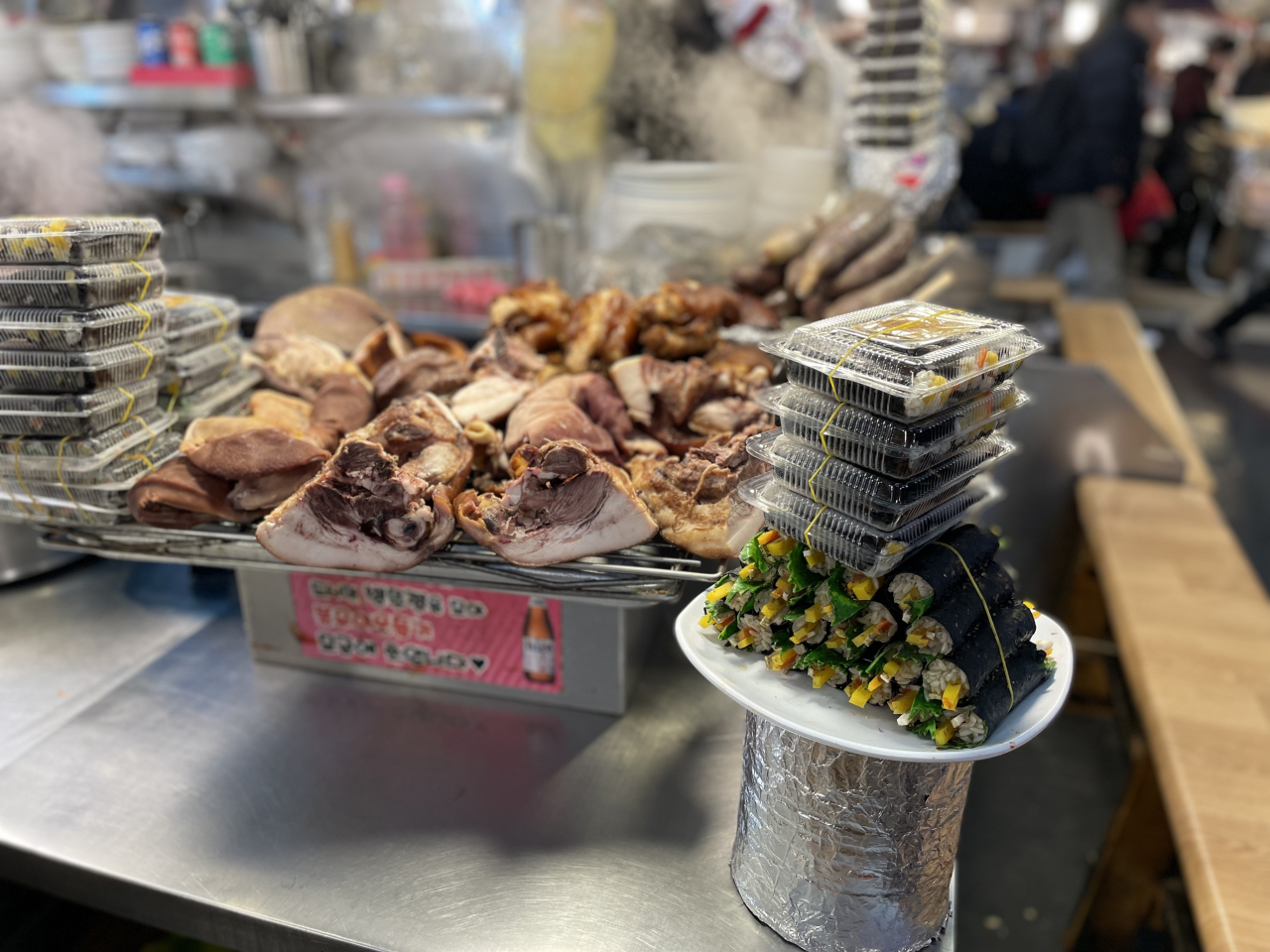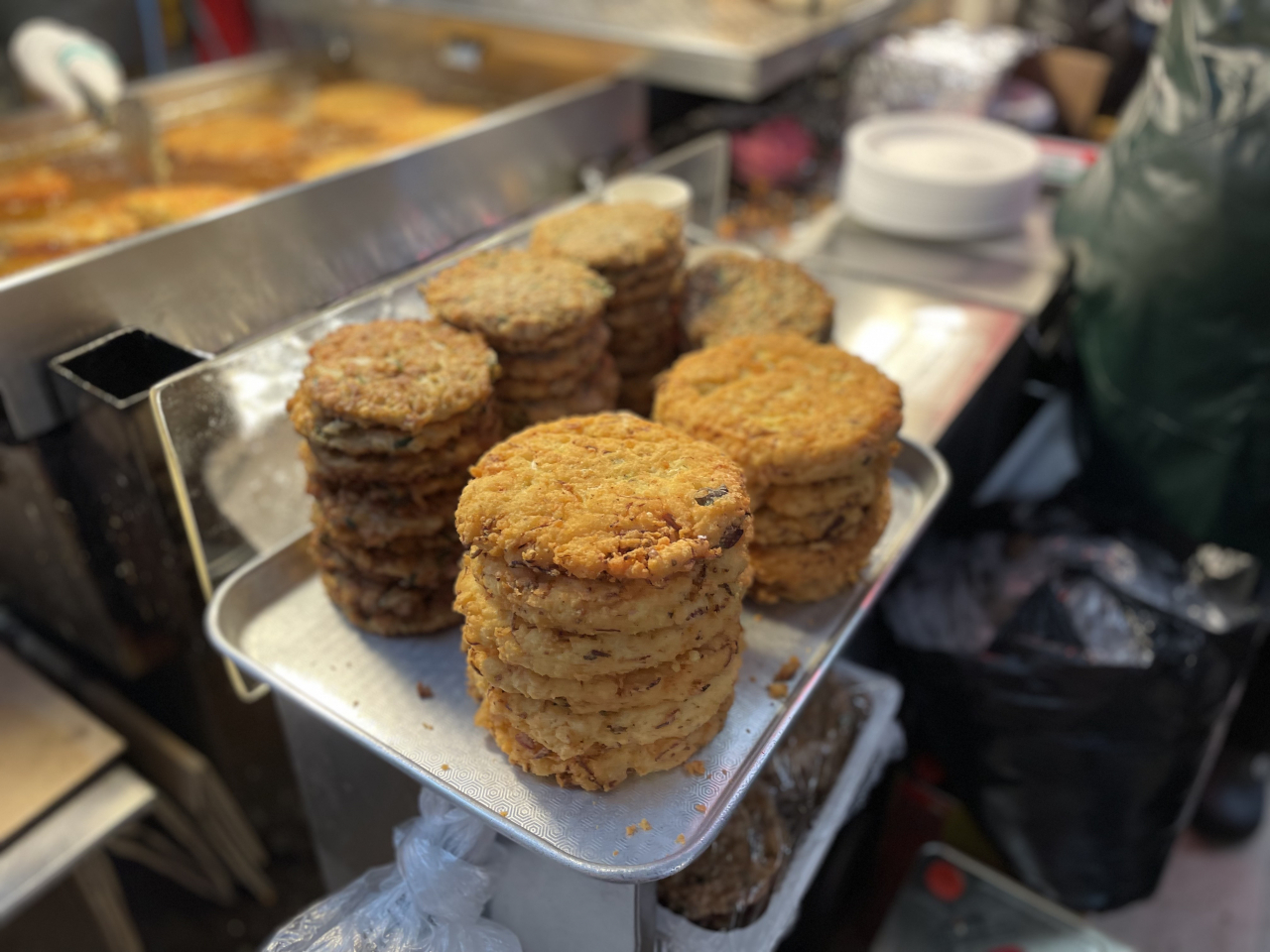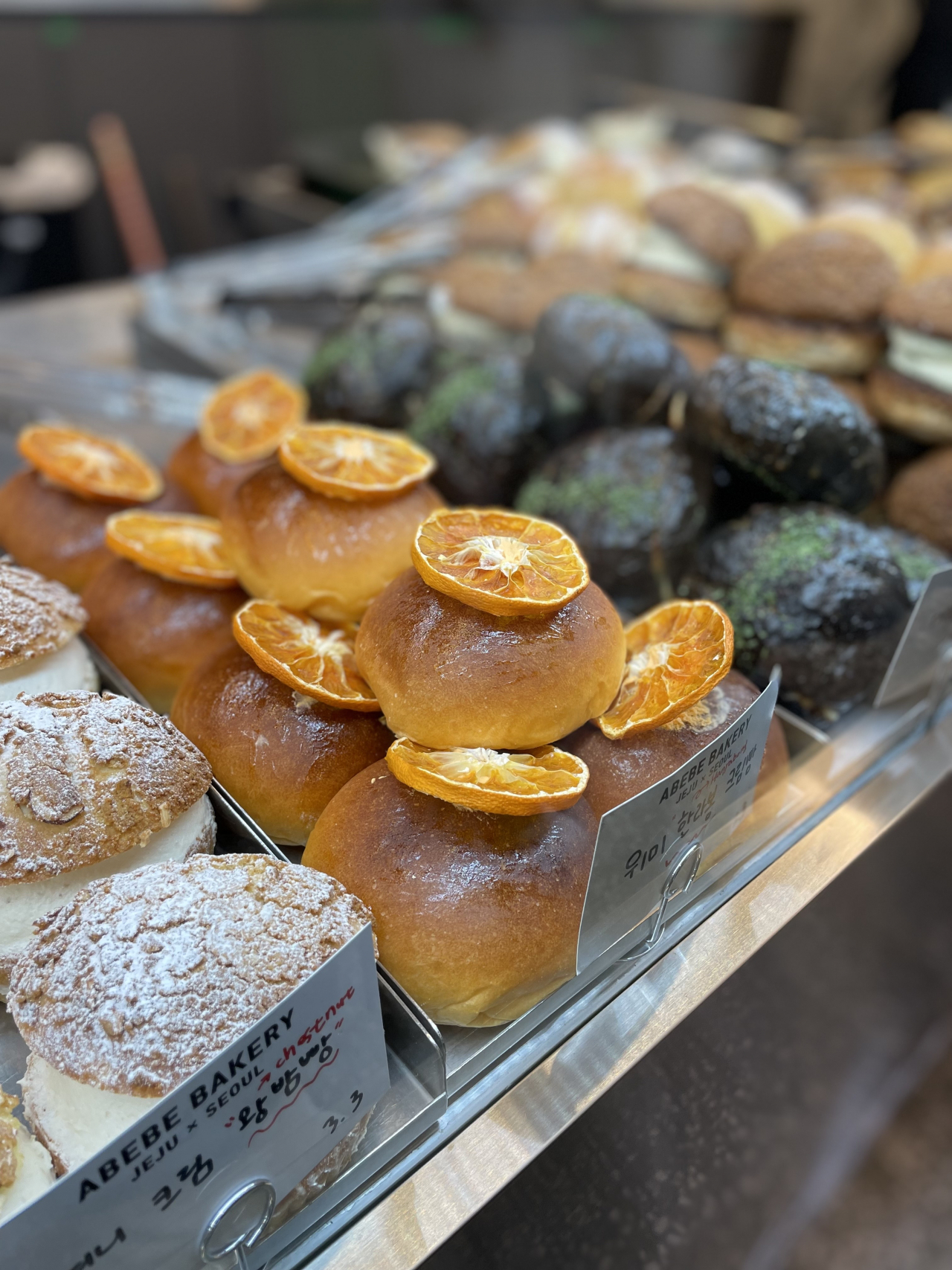
Located in the vibrant area near Jongno 5-ga Station on Subway Line No. 1, Gwangjang Market is Seoul’s flagship marketplace, with a history dating back to 1905 and which still thrives as a popular tourist destination.
The market began as a small trading center that brought in goods from nearby regions and grew into a large wholesale market offering a wide variety of goods, including groceries, dried fish and imported and traditional goods, to name a few.
Because the eateries inside the labyrinthine market spanning 42,000 square meters with 500 small stalls came into existence to feed at the least 20,000 merchants working at the market, the food at Gwangjang Market is known as the food of the working class: cheap, delicious and filling.
While the most popular section of the market is the food street that connects the East Gate, North Gate 2 and South Gate 1, more foreign visitors these days are coming to the market to taste Netflix-famous kalguksu and street food featured on "Running Man." Most food stalls open at 8:30 a.m. and continue operating until around 9 p.m.
Gwangjang Market’s food street caters to a wide range of patrons, with offerings that are wide-ranging, from noodles in soup to warm mung bean pancakes and nourishing tuna gimbap.

Nude gimbap
Different from Gwangjang Market’s well-known mayak gimbap – rice rolls with carrot, pickled radish and spinach dipped into mustard sauce before eating -- the real hidden gem of the market is the nude gimbap.
The gimbap is formed inside out, with toasted seaweed inside, rice on the outside and stuffing in the center, similar to a California roll. The kick of Gwangjang Market’s nude gimbap is that the rice roll is topped with a lot of tuna fresh out of the can and mixed with mayonnaise.
This novel style of gimbap goes well with japchae – Korean glass noodles -- with fish cake soup on the side for a hearty meal. The combo is just 6,000 won and makes for a unique, filling and delightful experience.

Nokdujeon (Mung bean pancake)
When you think of the signature, steady-selling Gwangjang Market dish, nokdujeon -- a thick fried pancake made with finely ground mung bean -- is likely to spring to mind.
No one can simply pass by the stalls selling these pancakes when the savory oil smell hits the nose. Because the crispy pancakes are served hot right before your eyes, it pairs well with the chilly air of the open-air market -- and together with makgeolli, or Korean rice wine, it becomes irresistible.
Nokdujeon is served with raw onions drenched in soy sauce and vinegar, making for a kind of light sauce, to tame the taste when it begins to feel too oily inside your mouth.
A plate of nokdujeon is 5,000 won.

Abebe Bakery Donuts
After a hearty, fulfilling meal, there is always room for dessert. Getting away from traditional sweets, how about the Jeju-inspired cream bun sold near the exit to Gwangjang Market?
Using famous ingredients from Jeju Island, Abebe Bakery’s cream donuts come with various fillings, including Udo peanut cream, Hamdeok corn cream, Jeju green tea cream and Wimi Hallabong citrus cream, or the never-fails dirty chocolate cream or strawberry cream.
Prices range from 2,900 won to 3,300 won, making it relatively cheap compared to other popular donut franchise shops in Seoul.
Abebe Bakery is open every day from 10:30 a.m. to 7:30 p.m. They recommend eating the donut on the same day, but if not they can be stored in a freezer for up to 30 days and defrosted at room temperature before serving.





